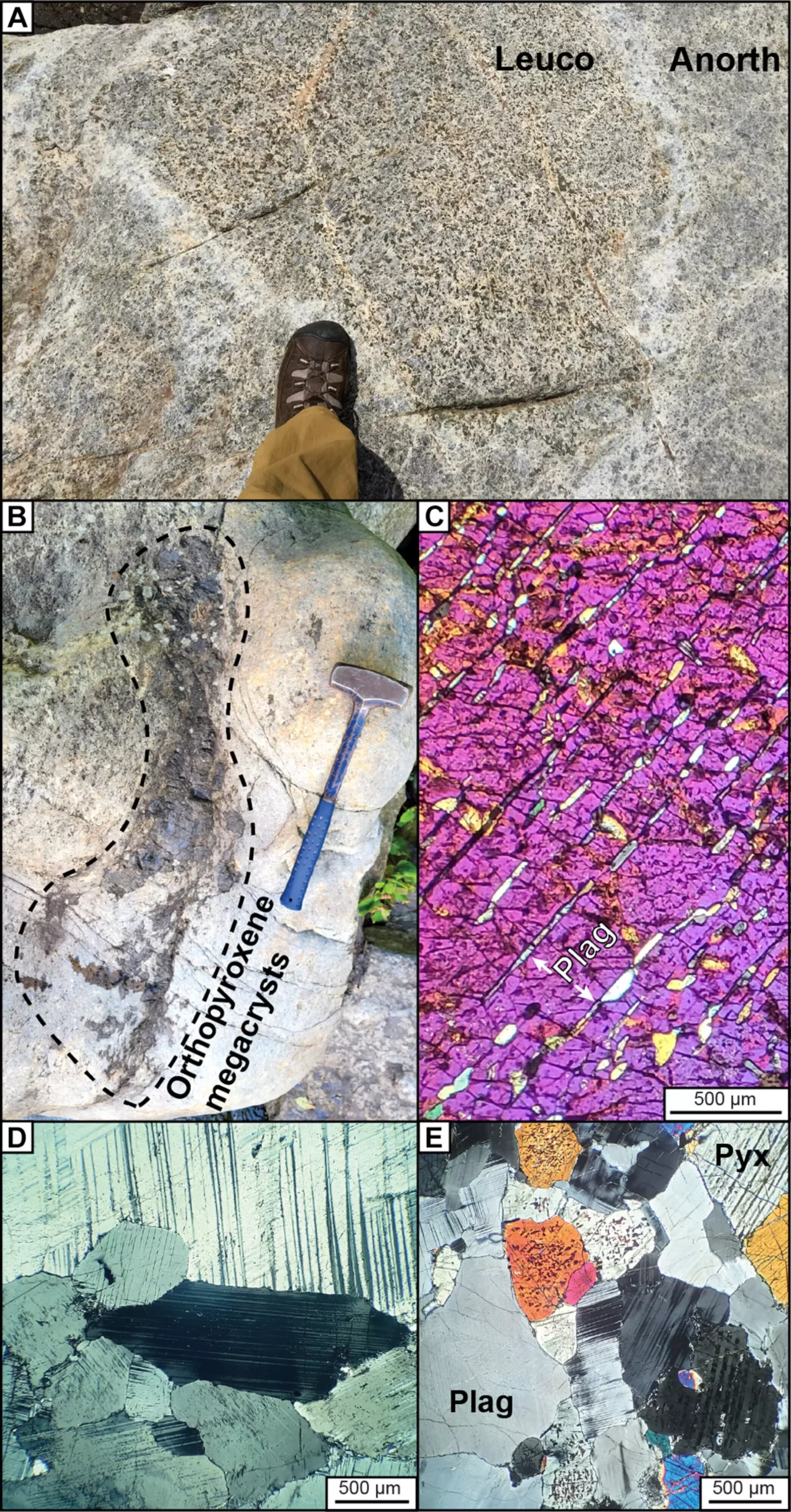Massif-type anorthosites, with their plagioclase-rich composition and unique formation process, have long perplexed geologists. These massive igneous rock formations cover vast areas and contain valuable titanium ore deposits, making them an intriguing subject of study. Despite their significance, the origins of massif-type anorthosites have remained shrouded in mystery, with conflicting theories complicating the matter. However, recent research has shed new light on these enigmatic rocks, offering insights into Earth’s geological evolution.
Unraveling the Formation Process
A team of researchers, led by Duncan Keller and Cin-Ty Lee from Rice University, delved into the complexities of massif-type anorthosites to unravel their formation process. By analyzing isotopes of boron, oxygen, neodymium, and strontium in rocks like the Marcy and Morin anorthosites, the researchers discovered crucial information about the magmas that gave rise to these formations. Through petrogenetic modeling, they found that the magmas were enriched with melts derived from oceanic crust altered by seawater at low temperatures, suggesting a unique origin story for these rocks.
The study’s findings provide valuable insights into Earth’s thermal and tectonic evolution, highlighting the intricate connections between the planet’s mantle, crust, and tectonic forces. By tracing the origins of massif-type anorthosites back to the extensive melting of subducted oceanic crust beneath convergent continental margins, the researchers have painted a clearer picture of Earth’s geological past. This process, fueled by the hotter mantle of the ancient Earth, offers a glimpse into the planet’s early history and the dynamics that shaped its crust.
One of the most significant implications of this research is the introduction of new interdisciplinary approaches to understanding ancient rock formations. The association between massif-type anorthosites and very hot subduction on the early Earth opens up possibilities for exploring how these rocks document the physical evolution of our planet. The application of boron isotopic analysis to these rocks represents a novel advancement in the field, combining traditional methods with innovative techniques to unlock the secrets of Earth’s geological heritage.
As the research team continues to delve deeper into the mysteries of massif-type anorthosites, the implications for Earth’s tectonic and thermal history become increasingly profound. By unraveling the processes that led to the formation of these unique rock formations, scientists can piece together a more comprehensive understanding of the planet’s geological evolution. Through collaboration with experts from various disciplines, the study offers a holistic perspective on Earth’s complex history, shedding light on the factors that have shaped our planet over billions of years.
The study of massif-type anorthosites represents a pivotal step in unraveling the mysteries of Earth’s crust and understanding the intricate processes that have shaped our planet. By exploring the origins of these enigmatic rocks, researchers have uncovered a wealth of information about Earth’s thermal and tectonic evolution, opening up new avenues for exploration and discovery in the field of geology. As we continue to probe the depths of our planet’s geological history, studies like these will play a crucial role in expanding our knowledge of Earth’s past and informing our understanding of its future.


Leave a Reply